“Mark, are you absolutely sure you need more photos of those grey birds sitting on grey rocks?”
My wife was in the kitchen of our Jasper condo, clutching a steaming cup of coffee while watching me prep my gear for yet another day of photographing American Dippers.
I had to concede her point. I do have several thousand photos of American Dippers in my collection. However, my obsession with Cinclus mexicanus is not based solely on their admittedly-monotonous colour scheme. Conversely, the charm of the Dippers lie in their interesting behaviour, surprising toughness, and the adaptations which allow them to thrive throughout the winter, despite the fact that they forage underwater and weigh as much as a golf ball.
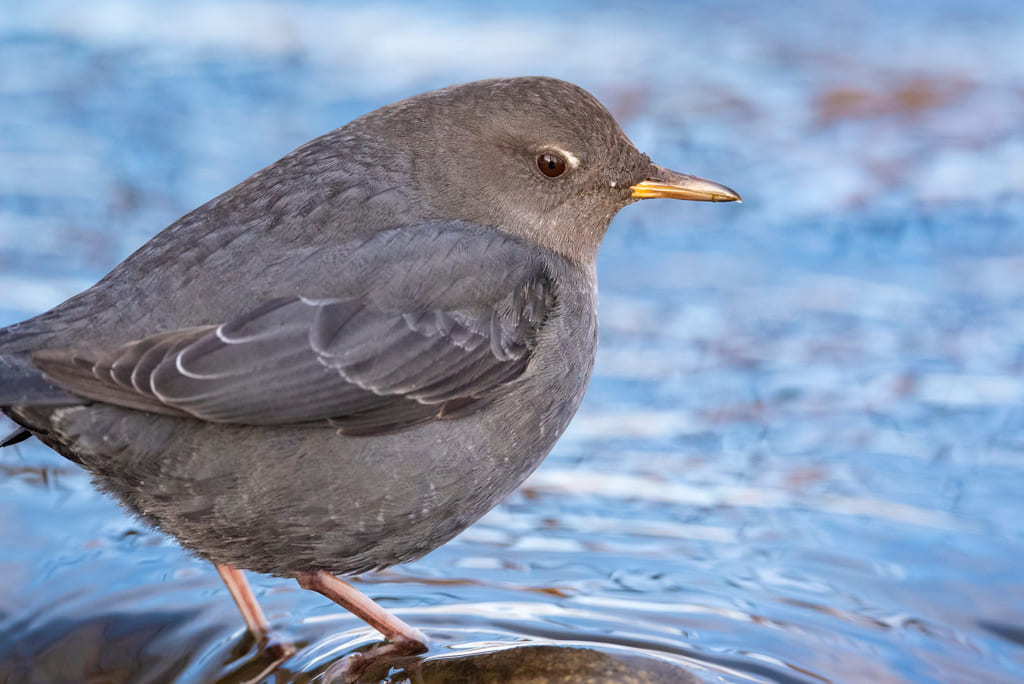
As I mentioned in last month’s article on irruptions, some birds leave for the winter, and some stick it out, no matter how low the thermometer plunges. Dippers are the stick it out types. Dippers—there are five Dipper species around the globe—are the world’s only true aquatic songbirds. They feed in, or under, swirling currents. They nest on rocks in the middle of raging torrents. They are never far from swiftly-running water.
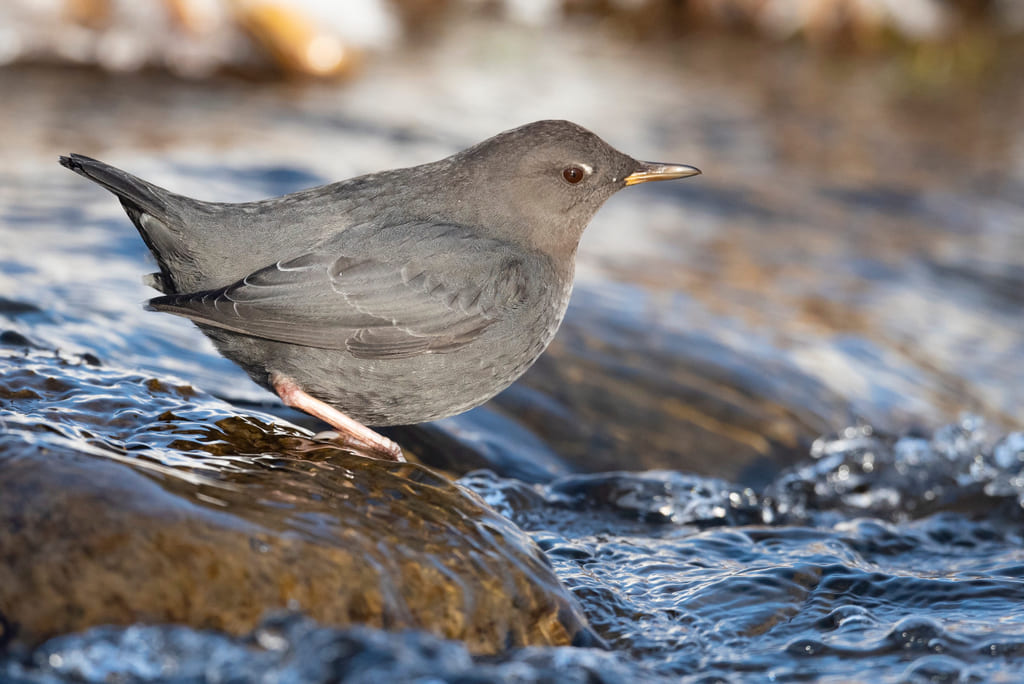
I recently caught an episode of Limitless, a TV series exploring the different ways humans can live better, for longer, by taking on physical challenges. Star Chris Hemsworth was completing a 250 metre swim in the Norwegian Arctic. It was impressive, but then I thought about my feathered friends. Dippers forage all day long in water every bit as cold as what Hemsworth was dunking himself into, plus they roost in temperatures that can drop to -40 degrees Celsius. And they do it all winter…not just for 20 minutes or so.

Of course Dippers have adaptations that have been denied to the cinematic god of thunder. First of all, birds have feathers for insulation. Feathers are made of keratin—the same stuff that makes up your fingernails—but each feather is made of tiny barbs, and each barb is in turn made of even tinier barbules and hooklets. These structures all work together to trap warmth next to the body. It’s the same concept which keeps you warm inside your down sleeping bag.
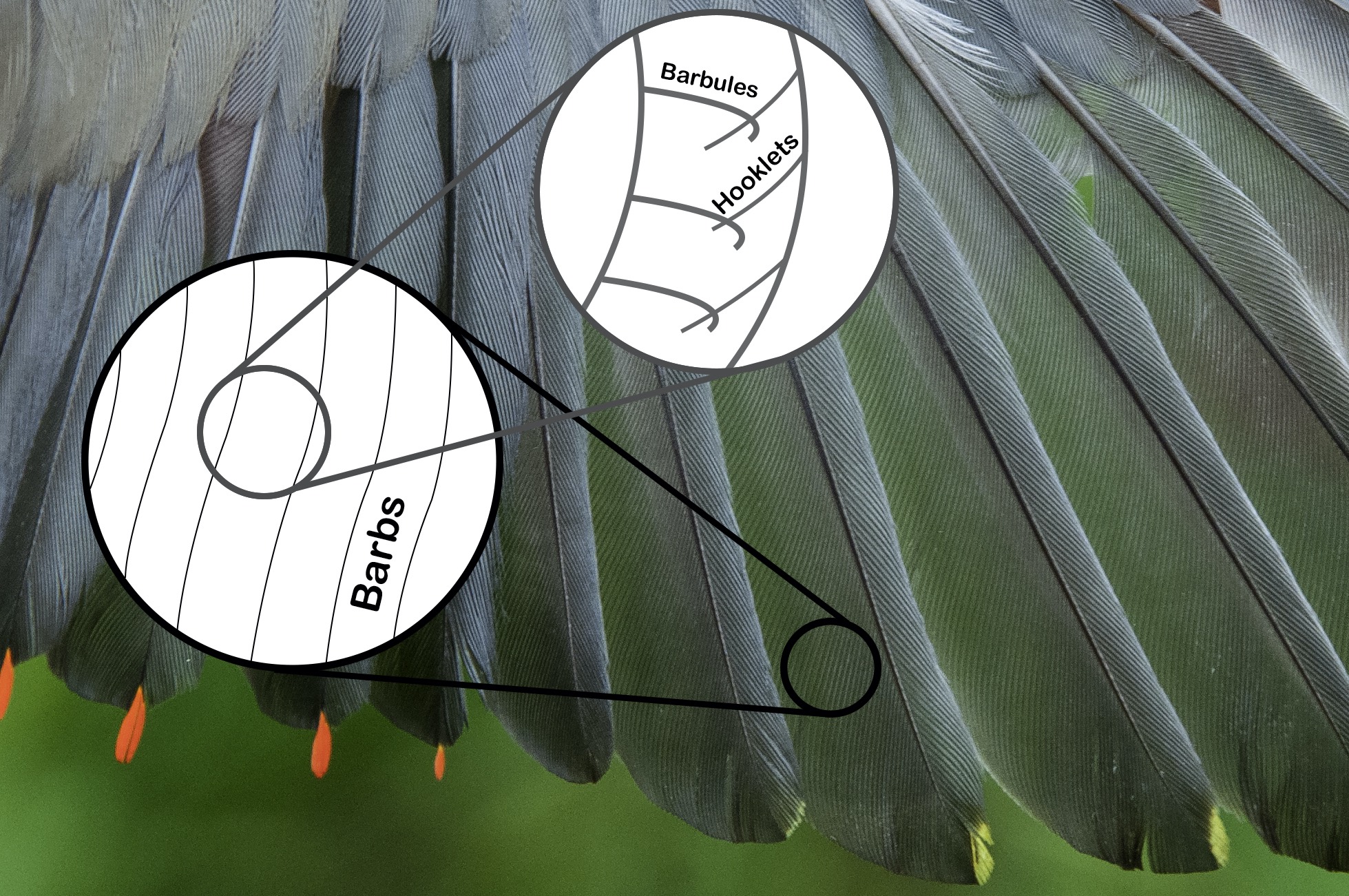
But what about those featherless legs and feet? Those twig-like appendages that are often sitting on ice, or immersed in frigid water? Appearances can be deceiving. What look like a bird’s ‘legs’ are in fact just elongated ankles and toes; most of the leg is tucked up into the warm zone of the body feathers.
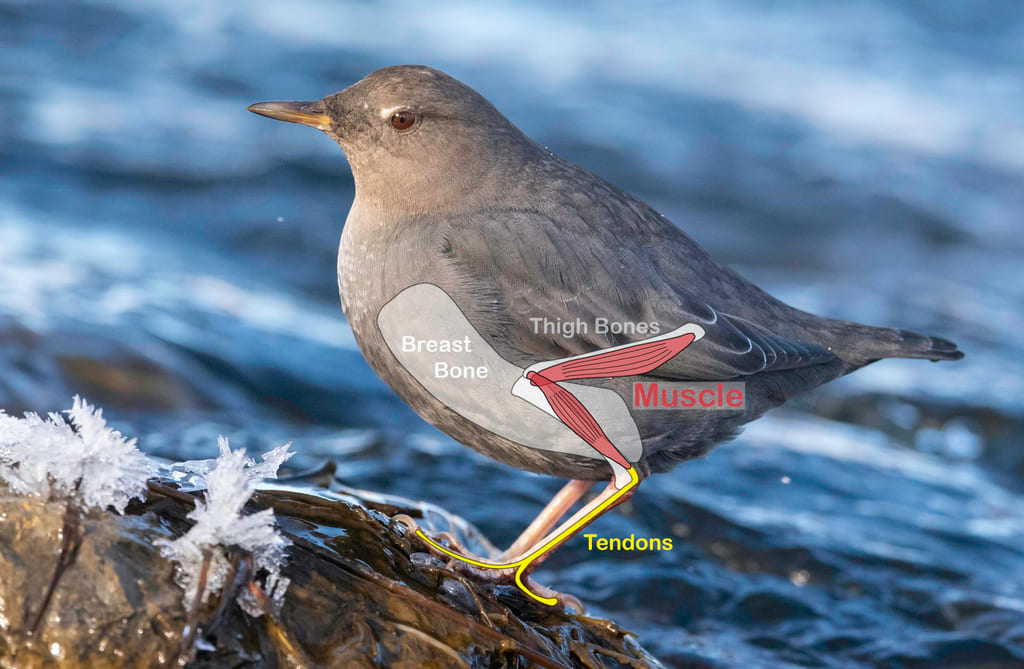
Evolution has shifted the leg and foot muscles up into the warm zone as well. The visible part of a bird’s legs are comprised of bone and tendon (unlike our feet, which have muscles). Since birds’ muscles are kept warm under the feathers, the exposed part of their legs can cool down without any adverse effects on their core temperature.
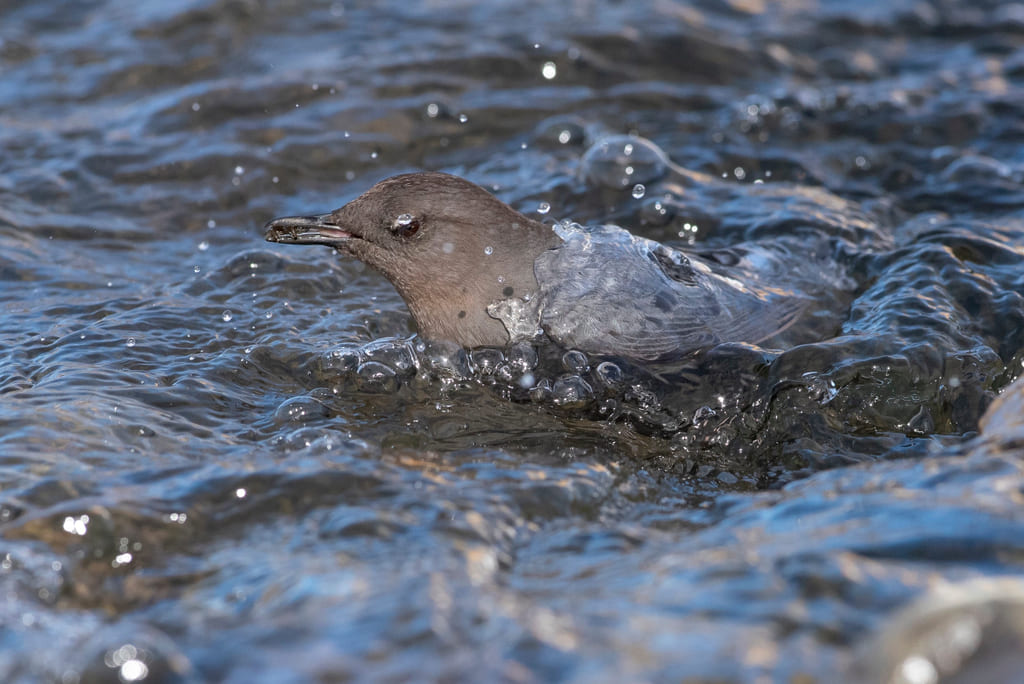
Completely frozen feet are not however, something Dippers are interested in. To prevent such an occurrence, blood vessels next to the tendons keep the Dippers’ feet above zero. In the past, biologists postulated that cold blood from the feet could move back to the body and quickly lead to a loss of all that carefully-preserved heat. However, research has discovered the Dippers’ answer to this dilemma: their legs’ ingoing and outgoing blood vessels lie right next to each other. As warm blood from the body moves down the leg, it warms up the nearby cold blood, which is returning from the feet, so the feet stay cool and the body stays warm. No merino wool necessary!
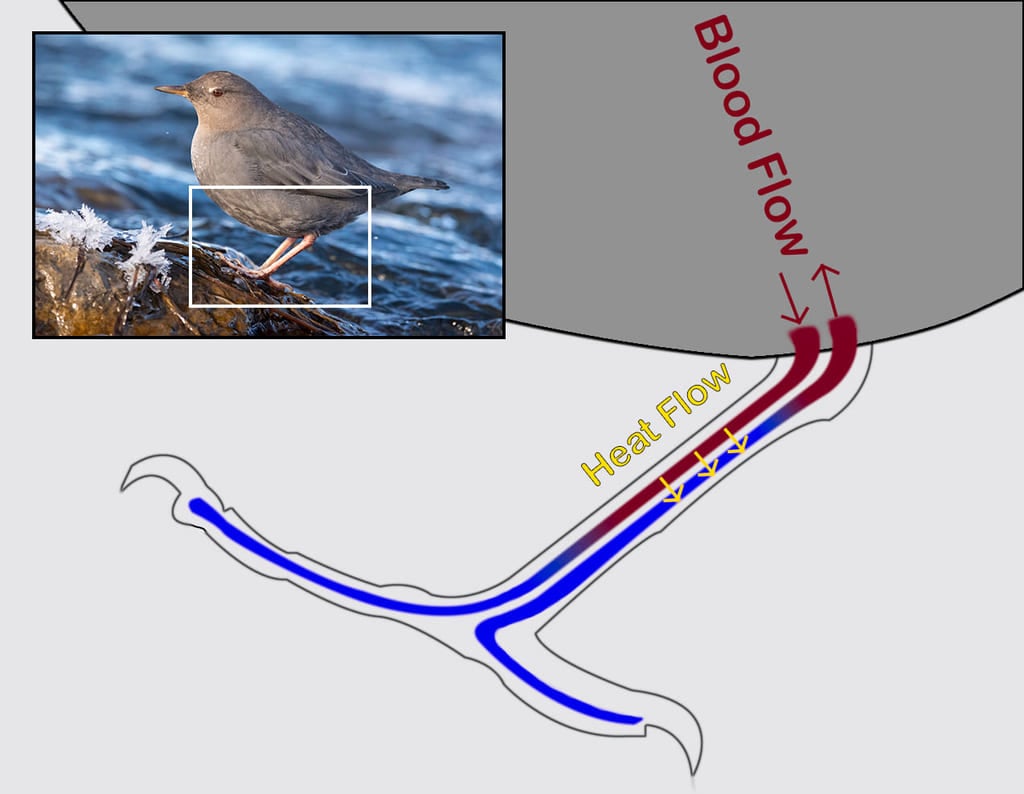
That brings us to yet another issue. Dippers are in and out of the water all day—don’t those feathers get soaked and ruin all that insulation? This potential problem is solved by preening. Dippers use their bill to collect oil from a special gland at the base of their tails, which they then apply to their feathers. All birds preen, but aquatic birds like the Dippers use a lot of oil, rendering them virtually waterproof.
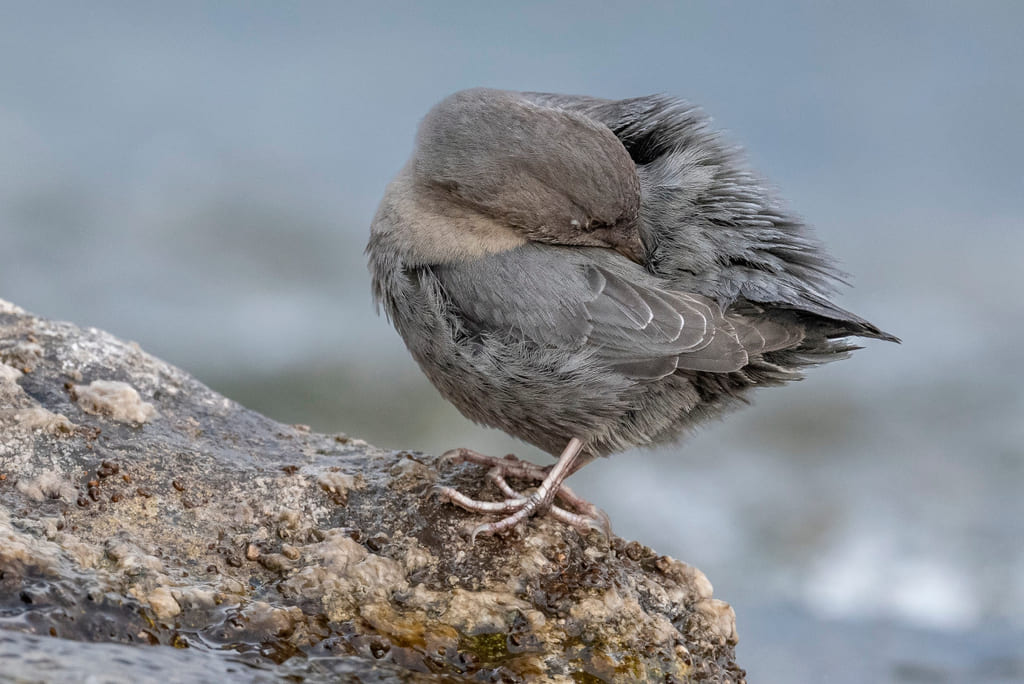
And finally, how do Dippers keep those metabolic furnaces burning? After all, insulation will only get the Dippers so far. Like any bird or animal, Dippers must eat enough food to heat up their bodies in the first place. The key to this query is also what enables Dippers to stay in Jasper over the winter: their underwater buffet is available all year long.
Now searching for bugs in cold running water may seem like a difficult way to make a living—you might wonder how there can be enough food in those little streams. However, I can tell you from experience that finding bugs in a winter stream is actually not as hard as you’d think. Back when I was in university, one of our professors gave us a seemingly arduous assignment: we were to collect 300 species of insects…in January…in Canada! But it turns out that many insects are born in the summer, and spend their first winters in the water as larvae, before emerging as adults the next year. The fact that moving water doesn’t freeze means that this pantry is open to the Dippers all winter long (everyone got their 300 insects, by the way).
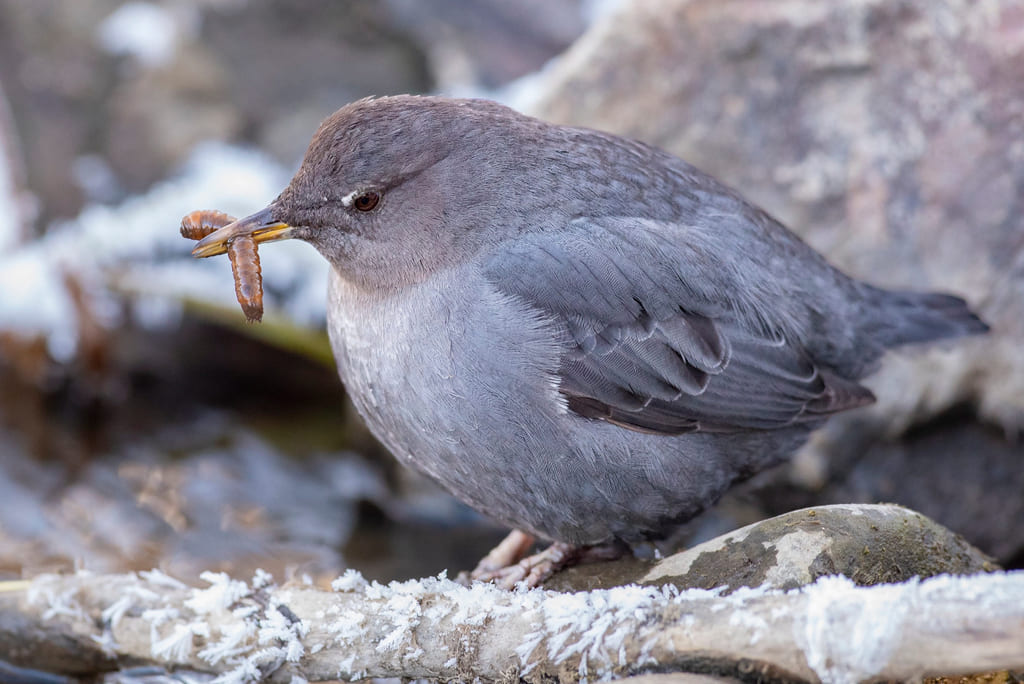
The mystery of a tiny bird thriving underwater in winter is explained by awesome insulation, anatomy and behaviour… now to finish gearing up for another couple hundred Dipper photos!
Mark Bradley // info@thejasperlocal.com


